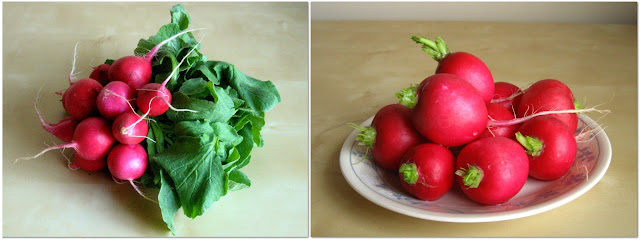I have a weakness for this farmer's market at Union Square. I love the farmers who go there, I love the location, and I love the produce. On a stressful day, going to the market is calming; something about all the colors, sounds, and smells comforts me.

The most important lesson my parents may have raised me with is that no matter how busy you are, there is always time for a real meal. I don't eat pre-made meals or fast food because honestly, it's not that much more convenient than a real, healthy meal made at home with good ingredients and a little TLC. How long does it take to wash and slice some vegetables? Sauté up some greens? Coddle an egg? Almost as much time as it takes to go out and order a cheeseburger and fries. But the time you put into making a good meal is rewarded when your body feels good after you eat, and you can smile with the knowledge that what you ate tasted good and was good for you.
I don't think I'm that picky of an eater, but I do have personal preferences, just like anyone else. And personally, I've never been a huge fan of radishes. They are spicy in a way that isn't that pleasant to me, and honestly, I don't know what to do with them besides eat them raw. A quick search on the internet seems to turn up basic recipes of roasted or braised radishes, but whenever I have good, fresh produce, I don't like cooking it, especially vegetables and fruits. They're better for you when they are raw. And so, because my mother raised me to eat my vegetables, when I saw these beautiful spring radishes in the market for just $2 a bunch, I had to buy them. I mean, I really had to. I was out of vegetables.
Sure, technically now that I grocery shop for myself, I could just buy my favorite foods all the time and eat nothing else, but that's not a practical way to live. I like asparagus, but I won't buy it when it's $5/lb, and I really enjoy steak, but I'm not going to pay $15/lb to eat it every weak. When produce looks good and is sold a good price, I buy it. That is what I mean when I say I like food. I don't just mean I like certain foods; I mean I like food in general. I enjoy experiencing flavors, and I respect good produce. And that means when fresh spring radishes are sold at $2/bunch, I buy them.
So what do you do with radishes?
Well, when I had bought the radishes, the bunch was so fresh and beautiful, I thought it would be a waste to throw away the green tops, but I've never eaten them before, so I asked the farmer what he normally does. He told me I could make a quick salad with the radish greens and an anchovy vinaigrette. He also told me I could stir the greens into a soup. Both ideas seemed interesting but it's been far too warm recently for soup and I don't generally keep anchovy products in my pantry.
In the end, after I brought them home and thoroughly washed them, I sauté-ed the radish greens with some butter and garlic. That was truly delicious. It tasted somewhat like mustard greens.
I ate the radishes raw, sliced with some butter and salt. This is how my mom and my grandmother always ate them when I was growing up, and so this is how I eat them now. And despite the fact that I have never been that fond of radishes, the hot greens with the cold radishes made a lovely meal. Such is the power of good produce.
**note: for people who really want to know what else you can do with radishes, I recently stumbled upon a recipe for radish chips, not unlike the idea of kale chips, in which radishes can be baked and dehydrated to form a tasty chip. Apparently this works in both sweet and savory forms, but I'll have to try it and report back!














